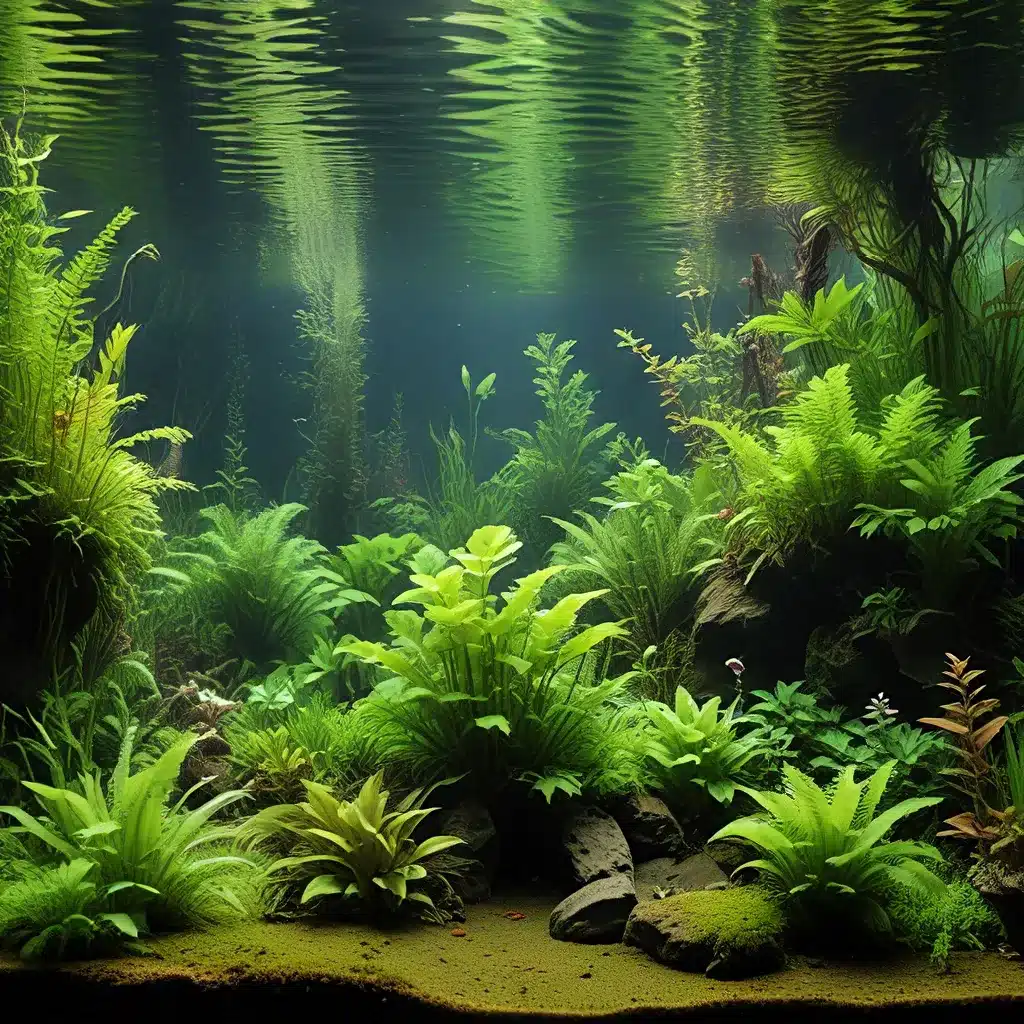
Aquarium enthusiasts have long been captivated by the allure of lush, vibrant underwater gardens. Aquascaping, the art of meticulously designing and arranging aquatic plants, has become a passionate pursuit for many hobbyists. However, before one can embark on the journey of creating a breathtaking aquascape, a solid understanding of aquarium plant cultivation is essential.
Mastering the Fundamentals of Aquarium Plant Horticulture
The journey towards successful aquascaping often begins with a focus on the practical aspects of aquarium plant care. Just as an artist must first learn the fundamentals of painting or sculpting, aquarists must develop their expertise in plant propagation and maintenance. This foundational knowledge serves as the bedrock upon which stunning aquascapes can be built.
One key aspect of this horticultural mastery is the establishment of a dedicated “farm tank.” This specialized aquarium serves as a laboratory for experimentation, allowing hobbyists to fine-tune their techniques without the constraints of balancing the needs of both plants and animals. By isolating the plants and manipulating variables such as lighting, nutrients, and carbon dioxide levels, aquarists can gain a deeper understanding of the intricate requirements of aquatic flora.
Through this hands-on approach, aquarists can develop a keen eye for plant health, growth patterns, and environmental adaptations. This knowledge becomes invaluable when translating these lessons into the design and maintenance of a visually striking aquascape. As one expert notes, “The farm tank is a laboratory to observe the interactions of light, aqua-soil, water, nutrients, and how tweaking those variables fuels success for growing aquarium plants.”
Designing a Thriving Underwater Ecosystem
With a solid foundation in aquarium plant horticulture, aquarists can then turn their attention to the art of aquascaping. This discipline combines scientific understanding with creative vision, allowing hobbyists to craft breathtaking underwater landscapes that mimic the natural world.
One of the key considerations in aquascaping is balancing the needs of the plants and the fish within the aquarium. While some species may thrive in a heavily planted environment, others may require more open spaces or specific water parameters. Carefully selecting compatible fish and plant species is crucial to maintaining a harmonious and healthy ecosystem.
Moreover, the choice of hardscape elements, such as driftwood, rocks, and substrates, plays a pivotal role in shaping the overall aesthetic and functionality of the aquascape. These materials not only provide structural support for the plants but also contribute to the overall visual appeal and natural feel of the underwater garden.
As aquarists delve deeper into the art of aquascaping, they may experiment with various techniques and design principles. From the use of symmetry and asymmetry to the creation of depth and perspective, the possibilities are endless. By drawing inspiration from nature and combining their knowledge of plant care, aquarists can bring their artistic visions to life, transforming their aquariums into verdant, underwater sanctuaries.
Maintaining a Thriving Aquascape
Crafting a breathtaking aquascape is only half the battle; the true challenge lies in sustaining the delicate balance of the underwater ecosystem. Proper maintenance and water management are essential to ensuring the long-term health and visual appeal of the aquascape.
Regular water testing, nutrient supplementation, and targeted trimming and pruning are all crucial components of aquascape maintenance. Aquarists must closely monitor water parameters, such as pH, temperature, and dissolved oxygen levels, to ensure that the plants and fish are thriving.
Additionally, the choice of filtration system plays a critical role in maintaining water quality and supporting the growth of aquatic plants. Advanced technologies, such as biological, mechanical, and chemical filtration, can work in tandem to create a stable, nutrient-rich environment for the aquascape.
As aquarists refine their maintenance routines, they may also explore the use of specialized tools and techniques, such as CO2 injection systems or automated dosing pumps. These advanced methods can help to fine-tune the aquarium’s ecosystem, optimizing plant growth and nutrient balance.
By embracing the art of aquascaping and the science of aquarium plant horticulture, hobbyists can create breathtaking underwater landscapes that not only captivate the eye but also foster a thriving, self-sustaining ecosystem. A well-maintained aquascape not only showcases the beauty of the natural world but also serves as a testament to the aquarist’s dedication and expertise.
Exploring the Boundless Possibilities of Aquascaping
As the aquarium hobby continues to evolve, the art of aquascaping has become an increasingly dynamic and innovative field. Aquarists are pushing the boundaries of traditional aquarium design, experimenting with new plant species, hardscape materials, and creative layouts.
One emerging trend in the aquascaping community is the focus on sustainability and environmental consciousness. Hobbyists are exploring ways to create aquascapes that mimic natural ecosystems, using native plant species and incorporating elements that promote the long-term health of the aquarium.
Another area of growth is the intersection of aquascaping and biotope design. Aquarists are meticulously recreating the natural habitats of specific fish species, using carefully selected plants, substrates, and decor to create immersive environments that reflect the species’ native ecology.
As the aquarium hobby continues to evolve, the possibilities for aquascaping become increasingly boundless. Hobbyists are not only captivated by the aesthetic appeal of these underwater gardens but also by the profound sense of wonder and connection to the natural world that they inspire.
Whether you’re a seasoned aquarist or a newcomer to the hobby, the art of aquascaping offers a unique and rewarding journey of discovery. By harnessing the principles of plant horticulture and the creative vision of aquascaping, hobbyists can transform their aquariums into vibrant, thriving ecosystems that bring the beauty of the natural world into their homes.

